2018: Steadfast and proactive year
30 December 2018
With the New Year just around the corner, I wish all Hong Kong people good health, much happiness and the best of luck throughout the year.
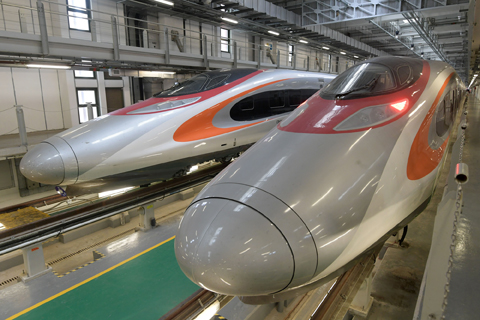
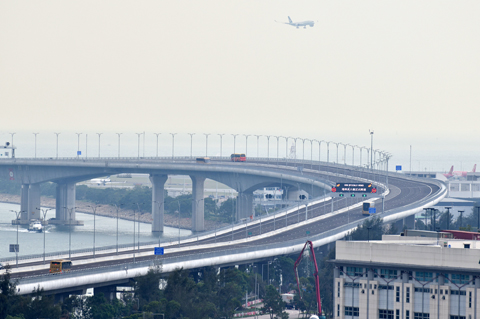
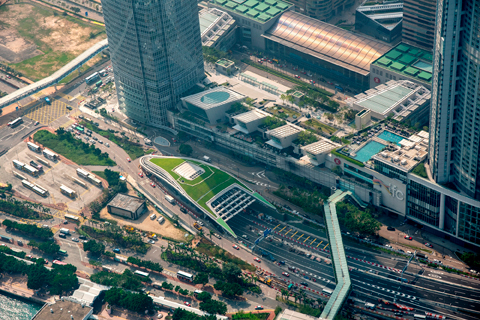 |
When it comes to this time of the year, it is often opportune to look back and plan ahead.
The year 2018 is a very fruitful year with various livelihood-related policy measures implemented one after another. It is a "year of leaping forward" for public transport, a "breakthrough year" for labour, welfare and healthcare, as well as an "investment year" for education.
Hong Kong is world-renowned for the accessibility of its public transport system. And the year 2018 is a "year of leaping forward" for public transport. Newly opened in September, the Hong Kong Section of the Guangzhou-Shenzhen-Hong Kong Express Rail Link serves as a main artery linking Hong Kong with the Mainland, providing efficient and time-saving clearance service under the co-location arrangement. Described as a mega project of the century and drawing worldwide attention, the Hong Kong-Zhuhai-Macao Bridge also came into operation in October. As the first cross-boundary land-based connection linking Hong Kong, Zhuhai and Macao, the bridge carries strategic importance for the overall development of Hong Kong and other parts of the Guangdong-Hong Kong-Macao Greater Bay Area.
The commissioning of the Central-Wan Chai Bypass and Island Eastern Corridor Link (the Bypass) on 20 January 2019 brings yet another piece of good news, providing an expressway for the east-west traffic in Central and Wan Chai. The Bypass is 4.5 kilometres long, connecting the Rumsey Street Flyover in Central and the Island Eastern Corridor in North Point, of which 3.7 kilometres is in the form of a tunnel. It will become a strategic highway running along the northern part of Hong Kong Island and will substantially alleviate the traffic congestion there. Upon the commissioning of the Bypass, it will take only about five minutes to drive from Central to the Island Eastern Corridor in North Point.
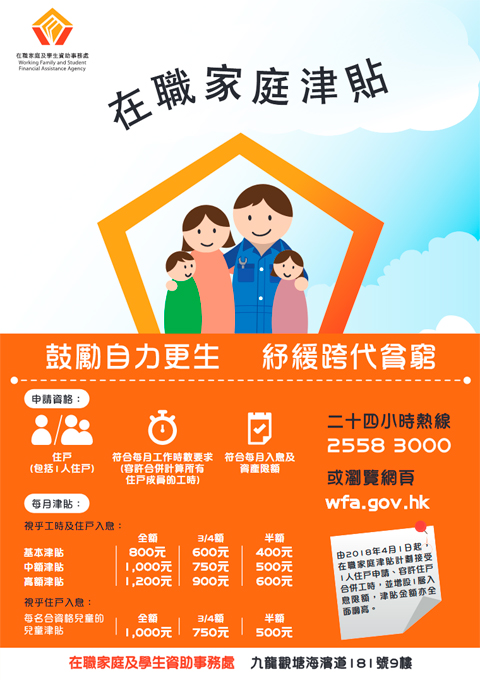
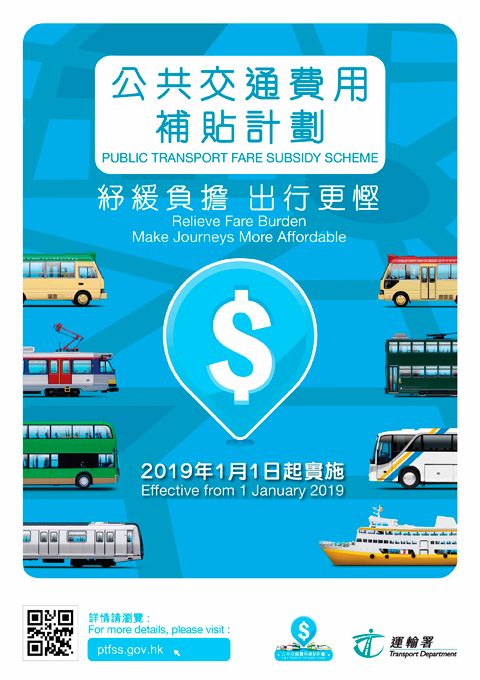
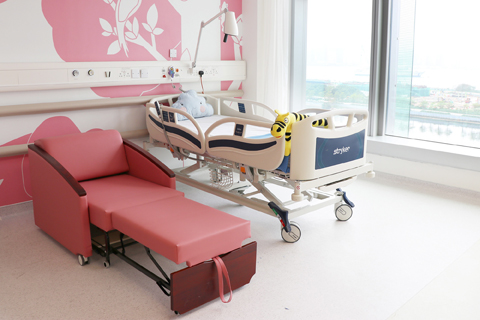 |
As a people-oriented government, we are determined to introduce new measures on labour welfare. For example, the Government has proposed to abolish the arrangement for "offsetting" severance payment and long service payment with Mandatory Provident Fund benefits, and to substantially extend the statutory maternity leave from the current 10 weeks to 14 weeks. Besides, the statutory paternity leave will be increased from three days to five days with effect from 18 January 2019.
Fully responsive to the needs and demands of the community, the Government also strives to take care of people at the grassroots level. Since April 2018, the Low-income Working Family Allowance has been improved and renamed the Working Family Allowance. As at 27 December 2018, the allowance was granted to some 45 000 households, involving an amount of nearly $790 million. The number of beneficiaries exceeded 150 000, including over 63 000 children.
In addition, the non-means-tested Public Transport Fare Subsidy Scheme will be implemented with effect from 1 January 2019. No application is required and no restriction is imposed on age or income level under the Scheme. Commuters spending more than $400 a month on public transport will be provided a subsidy amounting to 25% of the actual public transport expenses in excess of $400, subject to a maximum of $300 per month. It is estimated that over 2.2 million commuters will benefit from the Scheme and the total amount of subsidy will be around $2.3 billion per annum.
There are also breakthroughs in the healthcare sector. Hong Kong's first children hospital opened this month, with services to be commissioned in stages. Apart from providing quality healthcare services, the hospital, characterised by a strong human touch, will also bring hope to the sick children.
Determined to strengthen primary healthcare, the Government is going to establish the first District Health Centre (DHC) in Kwai Tsing District around the third quarter of next year. The experience gained will then offer a blueprint for setting up more DHCs in other districts.
On education, the year 2018 is definitely an "investment year". Investment in education is, in essence, investment in the future. The current-term Government increased the recurrent expenditure on education by $3.6 billion for the implementation of a package of quality education measures just after taking office. Together with an additional recurrent expenditure of about $4.7 billion as announced in the 2018 Policy Address, the accumulated increase in recurrent expenditure on education totalled up to no less than $8.3 billion. Education is the largest item of public spending with an overall recurrent expenditure of $84.6 billion, accounting for nearly 21% of total government expenditure for 2018-19. As education is crucial to the nurturing of talent, more policy measures will be put in place, such as the all-graduate teaching force policy in public sector primary and secondary schools, and the provision of a Life-wide Learning Grant.
In order to encourage members of the public to pursue continuing learning, the Government has injected $10 billion into the Continuing Education Fund (CEF) and will implement a series of enhancement measures starting from 1 April next year. These measures include increasing the subsidy ceiling from $10,000 to $20,000 per person, re-activating closed CEF accounts, relaxing the upper age limit for CEF applicants to 70, and expanding the scope of CEF courses.
Administered by the Working Family Allowance Office, the Caring and Sharing Scheme is scheduled to be open for application starting from February next year. Under the scheme, a person who meets the relevant eligibility criteria may apply for $4,000 or the balance after deducting the relevant tax concession and/or rates concession. It is estimated that up to about three million people will be eligible for application and the total amount to be disbursed will be around $11 billion. Similarly, recipients of social security payments have also been provided a "top up" payment if the extra two months' allowance, as announced in the Budget, they received was less than $4,000.
To subsidise property owners in need to modernise aged lifts, thereby enhancing lift safety and further safeguarding public safety, the Government will launch a $2.5 billion Lift Modernisation Subsidy Scheme to speed up the lift modernisation works. The Scheme is expected to be open for first-round application in late March next year. It is initially estimated that about 13 000 lifts meet the application criteria. Our target is to provide subsidy over a six-year period for about 5 000 lifts which are given higher priority for the modernisation works.
While the new year will bring us both hopes and challenges, I am confident that the civil service will stay united and work together to face any difficulties ahead. The Government will continue to work in a practical and pragmatic manner, and give our best to ensure the smooth operation of Government and effective policy formulation and implementation. Seizing the huge opportunities brought by the development of the Guangdong-Hong Kong-Macao Greater Bay Area and the Belt and Road Initiative, the Government will uphold the principle of proactive governance to help Hong Kong, a blessed place and Asia's world city, move forward.

